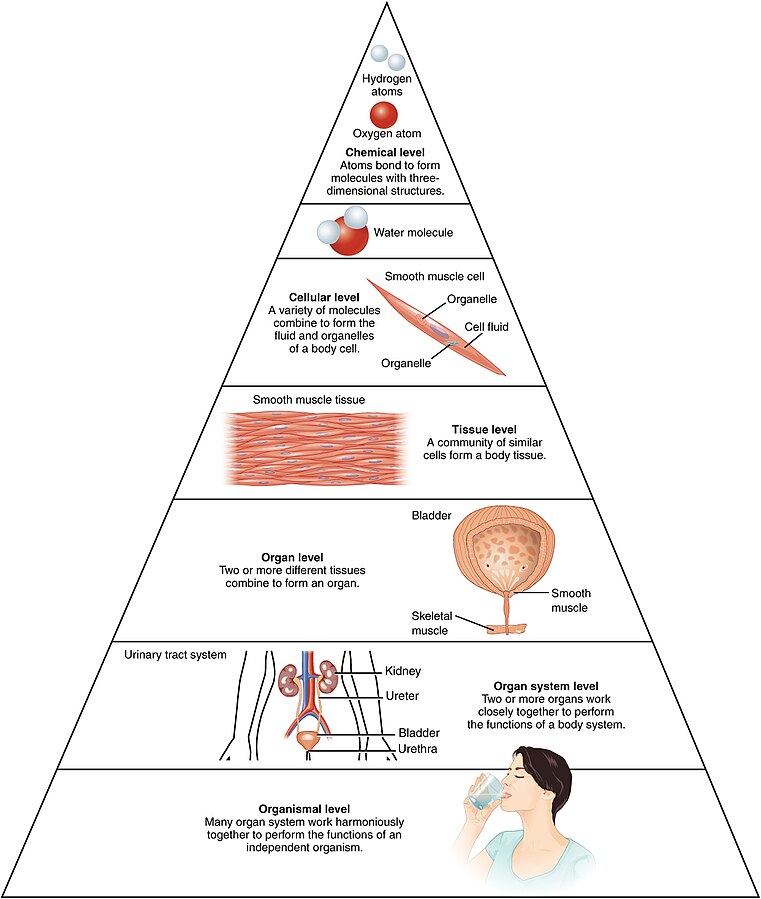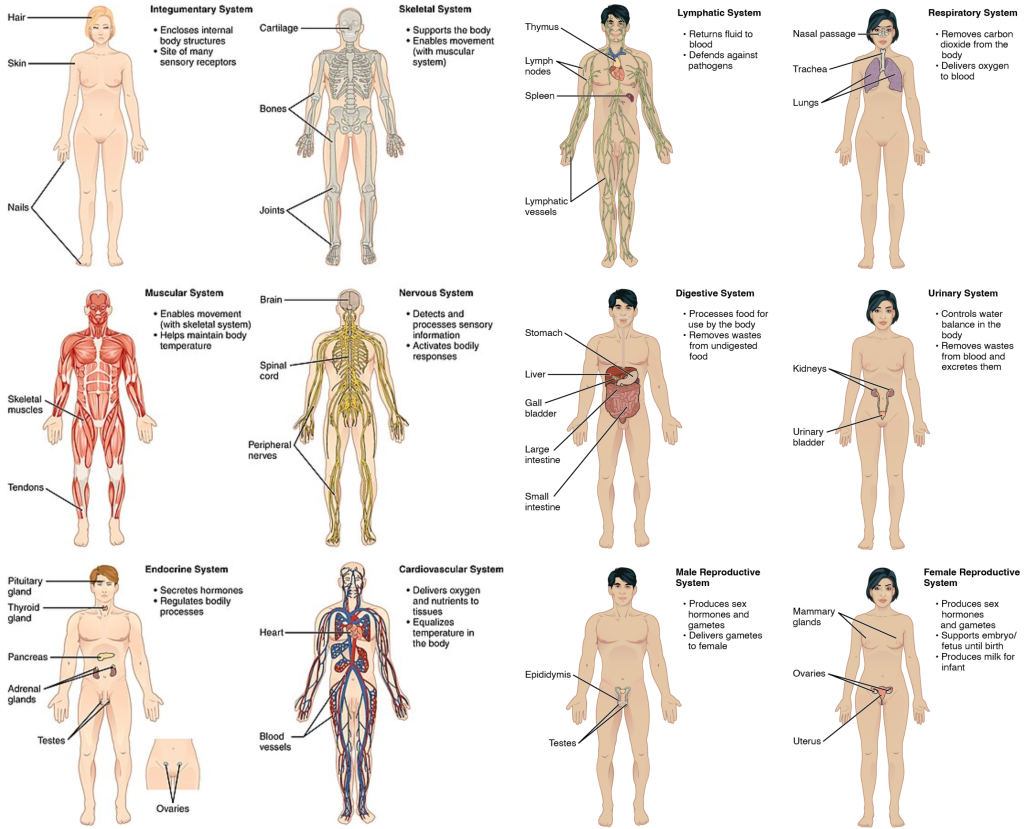1.3 Levels of Organization
Levels of Organization[1]
The human body can be organized in many levels, ranging from simple to complex. These levels include atoms, molecules, cells, tissues, organs, organ systems, and the organism. Atoms and molecules form cells, cells group together to form tissues, tissues form organs, organs form organ systems, and organ systems make up an organism. See Figure 1.2[2] for an illustration of the levels of organization.

An atom is the smallest unit of matter that has the properties of an element. Atoms are made up of protons, neutrons, and electrons. Two or more atoms combine to form a molecule, such as the water molecules, proteins, and sugars found in living things. Molecules are the chemical building blocks of all body structures. A cell is the smallest independently functioning unit of a living organism. The human body is composed of trillions of cells, and almost all functions of human physiology are performed by cells. A tissue is a group of many similar cells that work together to perform a specific function. An organ is an anatomically distinct structure of the body composed of two or more tissue types. Each organ performs one or more specific physiological functions. Most organs contribute to more than one organ system. An organ system is a group of organs that work together to perform major functions or meet physiological needs of the body. This book covers ten organ systems in the human body. See Figure 1.3[3] for an illustration of organ systems.

- Betts, J. G., Young, K. A., Wise, J. A., Johnson, E., Poe, B., Kruse, D. H., Korol, O., Johnson, J. E., Womble, M., & DeSaix, P. (2022). Anatomy and physiology 2e. OpenStax. https://openstax.org/books/anatomy-and-physiology-2e/pages/1-introduction ↵
- “101_Levels_of_Org_in_Body” by OpenStax is licensed under CC BY 4.0 ↵
- “Organ_Systems_I” by OpenStax is licensed under CC BY 3.0 and “14d9efd1f4ce4ca2dee5f013b1f98c49ab993573” by Rice University is licensed under CC BY 4.0. Access for free at https://openstax.org/books/anatomy-and-physiology-2e/pages/1-2-structural-organization-of-the-human-body ↵
The smallest unit of matter that has the properties of an element.
When two or more atoms combine chemically.
The smallest independently functioning unit of a living organism.
A group of many similar cells that work together to perform a specific function.
An anatomically distinct structure of the body composed of two or more tissue types.
A group of organs that work together to perform major functions or meet physiological needs of the body.

